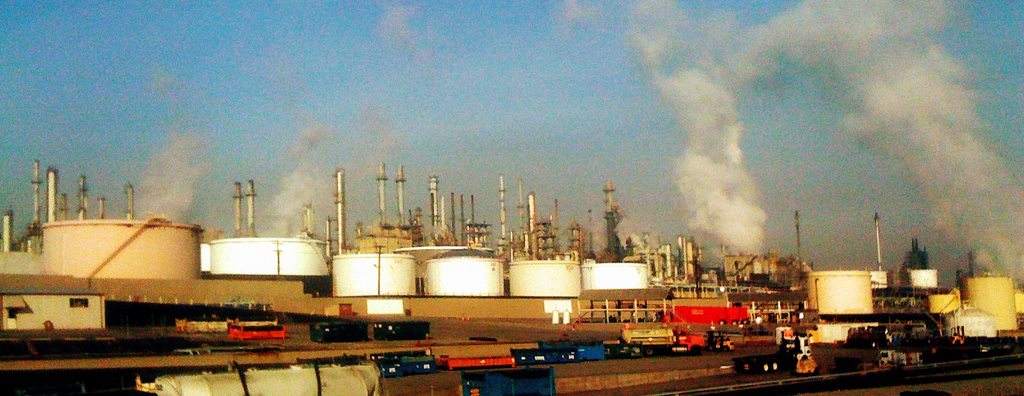
What should happen to the money when carbon polluters pay?
Economists generally agree that requiring polluters to pay for their carbon emissions is the essential policy solution for mitigating catastrophic climate change. Yet, what happens to the revenues raised by either of these carbon pricing systems is essential. As Oregon and Washington debate carbon pricing mechanisms, it’s essential to understand how these revenues can be handled and how California, the state with the most advanced carbon pricing in the United States, has decided to allocate its new carbon revenue.
The dollars raised through carbon pricing can be allocated to three general categories:
- Revenue for industry. Under a cap, permits to pollute can be given away for free (“allocated”) to emitters, rather than being sold to them through an auction. Even with free permits, emitters are incentivized to reduce emissions (because excess permits can be sold). Without global carbon pricing, giving away permits can be an important component of ensuring that carbon pricing doesn’t put industry at a significant disadvantage against competitors who do not pay for their carbon pollution.
- Revenue for the public. Revenues can be directly returned to the public—through refundable state income tax credits or some other mechanism for direct payments to citizens. Carbon pricing is often criticized as regressive because energy costs are a larger portion of low-income budgets. Returning revenues to the public can help mitigate this.
- Allocation to the government. Public agencies can retain revenues as well—to either reinvest in climate mitigation or to fill other budget gaps.
The climate policy debates in Salem and Olympia have, in part, focused over which of these three categories should be allocated carbon revenues. Oregon Climate has led a campaign to price carbon and return the proceeds through a dividend to the tax payer. Two bills, a carbon fee-and-dividend (HB 3176) and carbon cap-and-dividend (HB 3250), distribute any revenues raised among Oregon tax payers—starting at an estimated $500 per year and increasing to as much as $1,500 per year. A separate bill (HB 3470) asks DEQ to design a mechanism to reach Oregon’s existing climate goals, which could open the door for Oregon to join California and British Columbia in their cap-and-trade system.
This raises an important question: Since 2012, how has California been allocating the revenues generated by its cap-and-trade system? Like California’s solution to so many other climate policy questions, it does a little bit of everything.
Sightline Institute put together this excellent summary of how the permits to emit carbon dioxide or allowances are allocated:
The olive bars of auctioned allowances raise dollars for the government. All revenues the public raises from these auctioned permits must be spent on climate mitigation. The Air Resource Board estimates it will auction roughly 36% of all permits, which the consulting firm Four Twenty Seven Climate Solutions calculates will generate a minimum of $12 billion in revenue through 2020 for the state. From a climate finance perspective, this raises an essential question—what is the most effective means of spending these new dollars for climate mitigation? To date, most has been spent on California’s controversial high-speed rail line.
What doesn’t show up clearly in Sightline’s graphic, but is essential to understanding California’s climate policy, is that a significant portion of the revenue raised by the system is returned to citizens through a dividend as well. As seen in the orange bars, most of the permits that are given away for free, go to electric utilities. All investor-owned utilities are required to then sell these allocated permits at auction and return all of these revenue to ratepayers (households get 85%, while industry and small business gets the remaining 15%). In May of 2014, for example, each PG&E customer received a $30-$40 “climate credit” on their electricity bill. These dividends will happen twice a year throughout the life of California’s carbon cap. Breaking Energy estimates that, depending upon carbon prices, somewhere between $5.7 billion and $22.6 billion will be returned to ratepayers through this dividend.
Remaining allowances are given to industry. Importantly, rather than grandfathering the permits based on historical emissions, California attempts to allocate the most permits to those companies that compete with producers outside of the state. This is an attempt to avoid putting in-state companies at a disadvantage.
I would argue that no one system is perfect, and carbon proceeds are well used when distributed back to citizens (to overcome the regressive nature of carbon pricing), when used by the government to invest in climate mitigation (to spur mitigation opportunities that need an catalyst), and when allocated to industry that might otherwise leave the state and leak its emissions. California’s hybrid of a partial dividend, a partial reinvestment in mitigation and a partial allocation to industry shows one method through which these different benefits can be realized.
